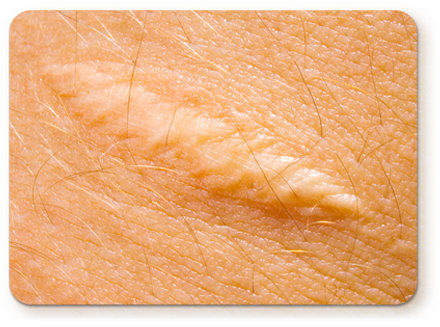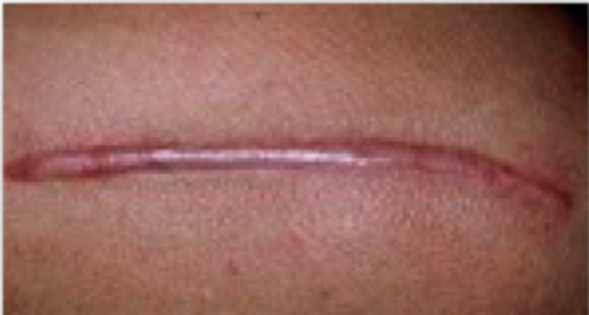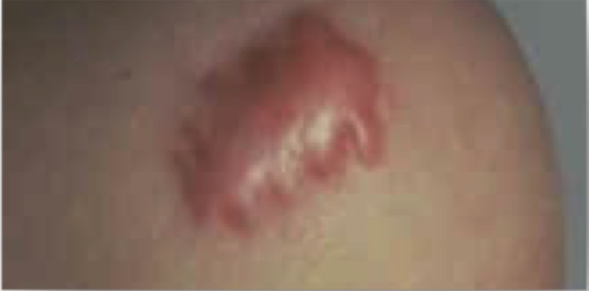A scar is a mark left on the skin after a wound or injury has healed. Scars are a natural part of the healing process. They result from the biological process of wound repair in the skin and other tissues of the body. Thus, scarring is a natural part of the healing process.
Normal scars heal well, leading to an unnoticeable fine line, whereas others are prone to develop scar hypertrophy or, in the worst case, transform into keloid scars or hypertrophic scars that are called abnormal scars.


A hypertrophic scar is raised and reddish in color. They are more common than Keloid scars; they don’t get as big as keloids, and may fade with time. Hypertrophic scars usually appear within a month of injury, whereas keloids may take three months or even years to develop. Hypertrophic scars are confined to the wound borders and usually regress over time.

Keloid scars are elevated scars that extend beyond the borders of the original wound, do not regress, and usually recur after excision.
Age
Keloid scars develop most likely between the ages of 10 and 30 years old. Also younger people are more frequently subjected to trauma. Skin healing is slow in older people, and their skin is less elastic, while younger skin tends to “over heal” forming larger, thicker scars.
Genetic factors – skin colour
People with dark skin tone are more prone to abnormal scars. Higher risks also appear to people with a family history of such scarring.
Hormonal influences
Scars tend to develop larger during pregnancy and puberty.
Scar location
Scars over or near muscles that are particularly active, such as the chest, back, legs, shoulders and joints, become more visible than scars formed on less active areas. Earlobes, shoulders have a high risk of developing keloids.
Wound infection or complications
Wound infection increases the likelihood of abnormal scarring. Some surgical procedures have an increased risk of scarring (e.g. breast surgery etc.)